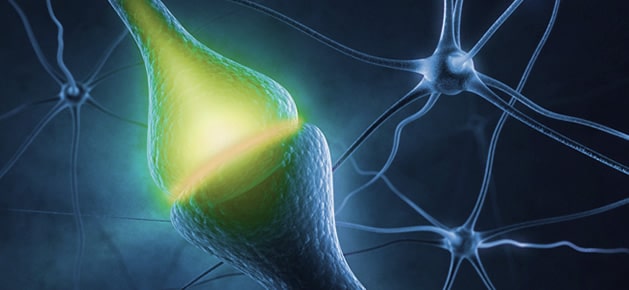
Bursitis
Bursitis is inflammation of a bursa. A bursa is a thin, fluid filled sac that protects tendons, which are the tissues that connect muscles to bones. The bursa functions to reduce friction between tendons and the bones, allowing the tendon to glide smoothly over the bone.
Acute bursitis may be caused by trauma to the area, or over use of a joint. The repeated motion of a muscle-tendon unit causes friction in the bursa, causing inflammation and swelling with fluid. Chronic bursitis is usually caused by long term overuse; the bursa thickens and no longer functions well. Symptoms of bursitis include pain in the area of the bursa, swelling, redness, decreased motion and function of the affected limb.
Cancer Pain
Unfortunately, people who develop cancer, often suffer from cancer related pains. The cancer cells can invade bones, nerves, organs and other structures in the body. The pressure or the destruction of normal tissue can cause severe pain.
There are also patients that may have cancer without cancer related pain, but have pre-existing or develop painful conditions such as degenerative joint disease, degenerative disc disease, sciatica etc. after a diagnosis of cancer that can be treated to improve function and quality of life.
During our consultations, we obtain a complete medical history and gather as much information as possible on a patient's pain and it impact on their life. Our providers work with each patient on a one-to-one basis to determine the best treatment plan for their individual pain, utilizing the most advanced techniques to improve symptoms and allow for increased participation in everyday activities.
Treatments for patients with cancer focus on relieving symptoms and can vary depending on the cause and severity of a patient's individual condition, as well as their overall health and medical history. The most successful pain management programs are those that are specifically tailored to a patient’s needs, enabling them to maximize their independence and capability.
Complex Regional Pain Syndrome (CRPS)
Complex regional pain syndrome (CRPS), formerly known as Regional Sympathetic Dystrophy (RSD), is an uncommon, chronic condition that affects the nervous system that usually affects your extremities. The cause of CRPS isn't clearly understood, though it often follows an illness or injury.
CRPS is usually presents as an intense burning or aching pain. Patients with CRPS may also experience swelling, skin discoloration, altered temperature, abnormal sweating, hypersensitivity, changes in hair & nail growth patterns, muscle spasms, weakness and decreased ability to move the affected body part.
Symptoms may change over time and vary from person to person. Once these changes occur, the condition is often irreversible. This is why it is important to treat complex regional pain syndrome. In such cases, dramatic improvements may be possible.
Disc Herniation
One cause of back pain or neck pain can be a herniated disk, sometimes called a slipped disk or a ruptured disk.
Your spine is made up of bones (vertebrae) cushioned by small oval pads of cartilage or disks consisting of a tough outer layer (annulus) and a soft inner layer (nucleus).
When a herniated disk occurs, a portion of the nucleus pushes out through a tear in the annulus into the spinal canal. This can irritate and inflame a nerve and result in pain, numbness or weakness in your back or neck as well as your leg(s) or arm(s).
You can have a herniated disk without knowing it — herniated or bulging disks sometimes show up on spinal images of people who have no symptoms of a disk problem. But some herniated disks can be painful.
Fibromyalgia
Fibromyalgia is a poorly understood complex, chronic disorder. It can cause widespread pain and stiffness, poor sleep and fatigue. It is often associated with other conditions including depression, anxiety, headaches, swelling of extremities, irritable bowel syndrome, and restless leg syndrome among others. It typically was a waxing & waning pattern that can be affected by weather changes, stress, overexertion, illness or surgery. The goal of treatment is to reduce symptoms and improve function, as there is no known cure. While treatment regimens vary widely, physical activity is of utmost importance.
Headaches
A headache is a common symptom that involves pain in one or more areas of the head or face. Over 45 million people are affected by headaches each year and many of them include chronic headaches that last for weeks or months with no relief.
Migraine headaches can cause intense throbbing or a pulsing sensation in one area of the head and is commonly accompanied by nausea, vomiting and extreme sensitivity to light and sound. Migraine attacks can cause significant pain for hours to days. Some migraines are preceded or accompanied by sensory warning symptoms known as an aura, such as flashes of light, blind spots, or tingling.
Cluster headaches are a type of headache that has a characteristic grouping of attacks. Cluster headaches occur up to 8 times per day during a cluster period, which may last 2 weeks to 3 months or longer. The headaches may disappear completely (go into remission) for months or years, only to recur at a later date. A cluster headache typically wakes a person from sleep 1 to 2 hours after going to bed. A cluster headache has no structural cause, and the biochemical cause is unknown. However the headaches occur with the trigeminal nerve pattern. They are typically on one side of the face, behind an eye that may radiate to other parts of the face usually described as a piercing or ice pick type of pain.
Tension headaches are generally a diffuse mild to moderate pain in the head that is often described as a tight band around the head. A tension headache is the most common type of headache, yet its causes are not well understood. The most common theories support a heightened sensitivity to pain and possibly heightened sensitivity to stress. Stress is the most commonly reported trigger for tension headaches.
If you would like more information about Conditions or to schedule an appointment, feel free to fill out our convenient contact form or call us directly at 760-753-1104.

